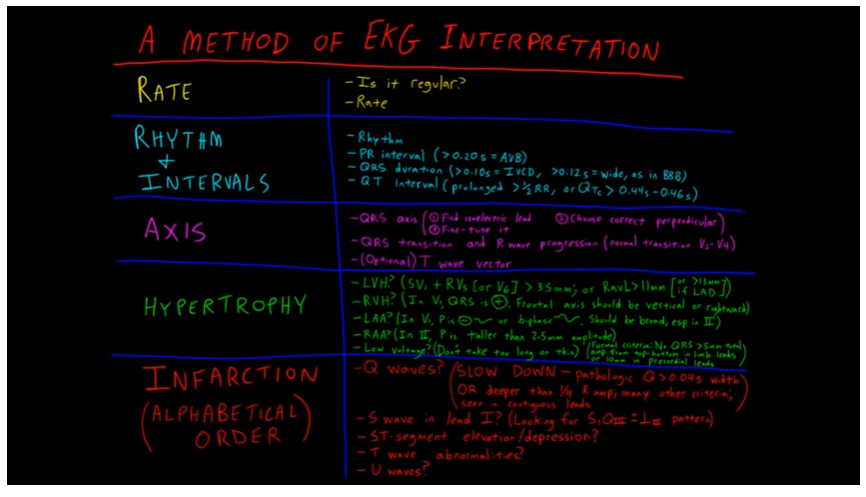This post contains a link to and excerpts from the outstanding YouTube video by Girish Kalra MD, Method, Rate, Rhythm: How to Read an EKG Curriculum.
Please note that these are simply my study and review notes and so don’t include everything that might be useful to other learners. So go ahead and watch the video and read the transcript that accompanies most YouTube videos.*
*See my post, How To Access And Read The Complete Transcript That Accompanies Most YouTube Videos. Posted on June 27, 2019 by Tom Wade MD
Here are excerpts from Method, Rate, Rhythm: How to Read an EKG Curriculum:
Dr. Kalra states strongly that you must have a system, a method that you follow when interpreting every single ecg. Otherwise, you will miss clinically significant abnormalities.
Here is Dr. Kalra’s system:
Dr. Kalra will be covering everything in the above graphic in detail in upcoming lessons.
So next we determine if the rhythm is regular or irregular. Atrial fibrillation is an irregularly irregular rhythm.
If the rhythm is irregular we count the number of beats in the ten second rhythm strip at the bottom of the twelve lead ECG recording and multiply times six to get the heart rate.
Next we determine the rate. And there are a number of ways to do that.
We can count the number of big boxes between two QRSs and divide 300 by the number of boxes.
Example: If there are three big boxes between the two QRSs, the rate is 100 (300/3=100).
Another way to determine the rate, if the rhythm is regular, you can count the number of small boxes between two QRSs and divide that number into 1500 (1500/1o small boxes = 150).






